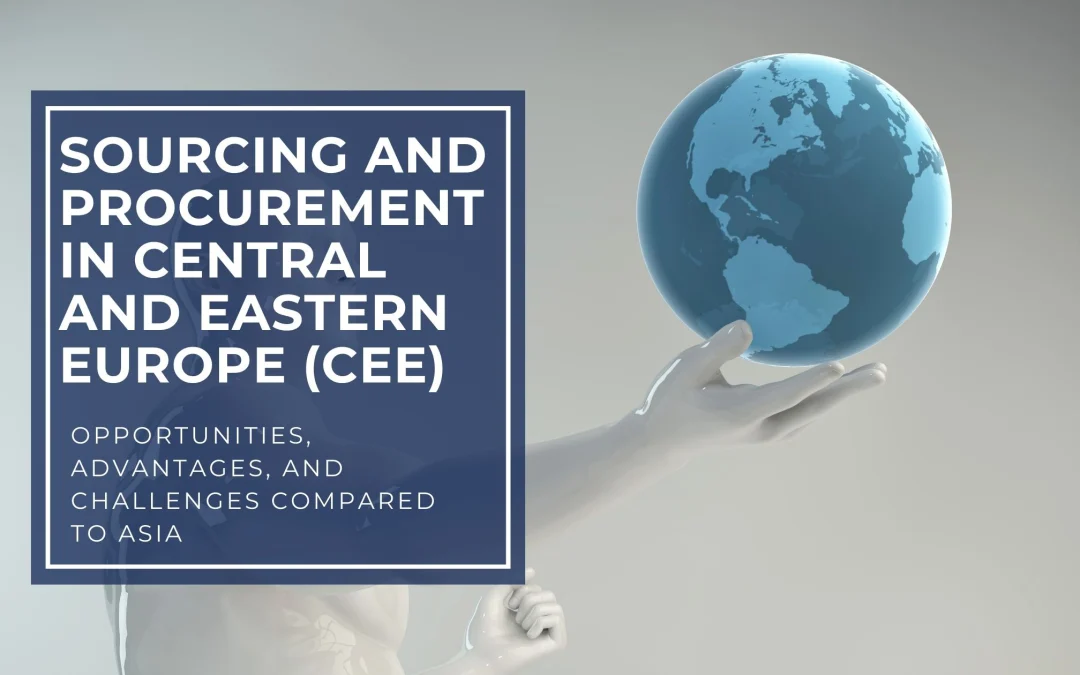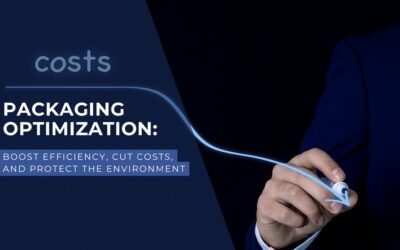Given the growing uncertainties in global supply chains, particularly in Asia, more and more companies are turning to Central and Eastern Europe (CEE) as a complementary sourcing option. However, CEE should be considered an addition rather than a replacement for Asia. This article explores the strategic reasons for this expansion, the benefits of the CEE region, and the challenges companies should take into account.
Reasons for Expanding Supply Sources
The decision to extend sourcing and procurement to the CEE region, alongside Asian production, is driven by various factors that encourage companies to diversify and make their supply chains more flexible. Key reasons include:
Supply Chain Security and Flexibility: Political tensions, trade tariffs, and strict regulations in Asian markets are leading companies to seek alternative, more stable supply chains. The CEE region’s proximity to Western Europe offers greater flexibility and higher transparency.
Shorter Lead Times: Geographical proximity enables shorter transportation routes, allowing faster delivery times, which is crucial for companies that rely on just-in-time production.
Cost Optimization amid Rising Labor Costs in Asia: Depending on the product and process, the CEE region can offer a competitive cost structure. Rising labor costs in Asia, particularly in China, have made CEE an economically attractive addition in certain cases.
CEE as a Complementary Sourcing Region to Asia
The CEE region comprises numerous countries with well-developed industries, skilled labor forces, and growing infrastructure. Key markets include Poland, the Czech Republic, Hungary, and Romania, which have gained increasing importance in recent years. Nevertheless, Asia remains essential for many companies, especially in areas that require high energy consumption.
Product-Dependent Cost Advantages: The CEE region is only more affordable than Asia in specific cases, and cost advantages vary greatly depending on the product. While labor and transportation costs can be advantageous in CEE, energy costs remain significantly lower in Asia. This is particularly relevant for energy-intensive processes, such as die-casting, which are still more economical in Asia due to lower energy costs.
Skilled Workforce and Industrial Expertise: CEE offers a highly skilled labor force, especially in technical and manufacturing professions. This allows companies to maintain the required expertise and high quality standards on site.
Infrastructure and Proximity to Key Markets: The region has a modern transportation network that enables efficient access to Western European markets. Shorter transport routes not only reduce delivery times but also lower CO₂ emissions.
CBAM: Impact of the New EU Regulation on Energy-Intensive Products
An important factor to consider in strategic planning is the upcoming EU Carbon Border Adjustment Mechanism (CBAM), set to take effect in 2026. This regulation will increase costs for energy-intensive products from non-EU countries. The goal of CBAM is to keep European companies, which follow strict environmental standards, competitive while promoting CO₂ emission reductions. As a result, the CEE region may become increasingly attractive for certain types of production as import costs for energy-intensive goods from Asia gradually rise.
Challenges in Sourcing from the CEE Region
While the CEE region offers many advantages, there are some challenges that companies should consider:
Regulatory Frameworks: Each CEE country has its own legal requirements and regulations, which may require additional administrative planning.
Competitive Pressure and Limited Capacity: The high attractiveness of the CEE region has led to intense competition for capacity. Strategic partnerships with local suppliers and early securing of production capacity are crucial.
Infrastructure Differences within the Region: While Poland and the Czech Republic have well-developed transportation networks, infrastructure in other parts of the CEE region is less advanced.
Success Factors for Sourcing Processes in the CEE Region
To benefit from the advantages of the CEE region as a complement to Asia, companies should adopt strategic measures:
Careful Supplier Selection: A thorough selection of suppliers in the CEE region ensures that quality standards are met and expectations are fulfilled.
Flexible Risk Management: Through flexible strategies and a network of suppliers across different countries, companies can quickly respond to unforeseen events.
Investment in Local Relationships: Long-term partnerships and an understanding of local culture and business practices are key to establishing stable supply chains.
Technology as a Driver of Supply Chain Optimization in CEE
Digital tools and technologies play a crucial role in optimizing supply chains in the CEE region:
Supply Chain Management (SCM) Systems: SCM software enables the monitoring and coordination of the entire supply process from order to delivery.
Track-and-Trace Technologies: Through IoT and track-and-trace solutions, companies can track goods in real-time and respond quickly to delays.
Data Analytics: Data analysis helps companies identify trends and patterns, making it easier to make informed decisions.
Sustainability and Environmental Friendliness in CEE Sourcing
Shorter transportation routes in the CEE region reduce CO₂ emissions and offer a practical solution for reducing the ecological footprint compared to sourcing from Asia. Many companies in the CEE region also rely on environmentally friendly production methods, supporting businesses that prioritize sustainable supply chains.
Conclusion: CEE as a Strategic Complement to Asia
The CEE region offers many advantages, particularly as a complement to Asian markets. With shorter delivery times, lower transportation costs, and greater flexibility, companies can optimize their global sourcing strategies. The upcoming CBAM mechanism, specific energy and cost benefits, and digital transformation provide key points for strategic planning. Companies that incorporate the CEE region early and develop a sustainable partnership strategy will strengthen their long-term competitiveness.
We support you in this:
Wieland TC: A Vision for Sustainable and Efficient Procurement
With nearly 30 years of experience in international trade and business consulting, Wieland Trade...
Cable Assemblies: Make or Buy? – Strategic Decisions for Efficiency and Growth
The question of whether to produce cable assemblies in-house or outsource them to an external...
Packaging Optimization: Boost Efficiency, Cut Costs, and Protect the Environment
In times of rising material and energy costs, packaging optimization is becoming increasingly...




